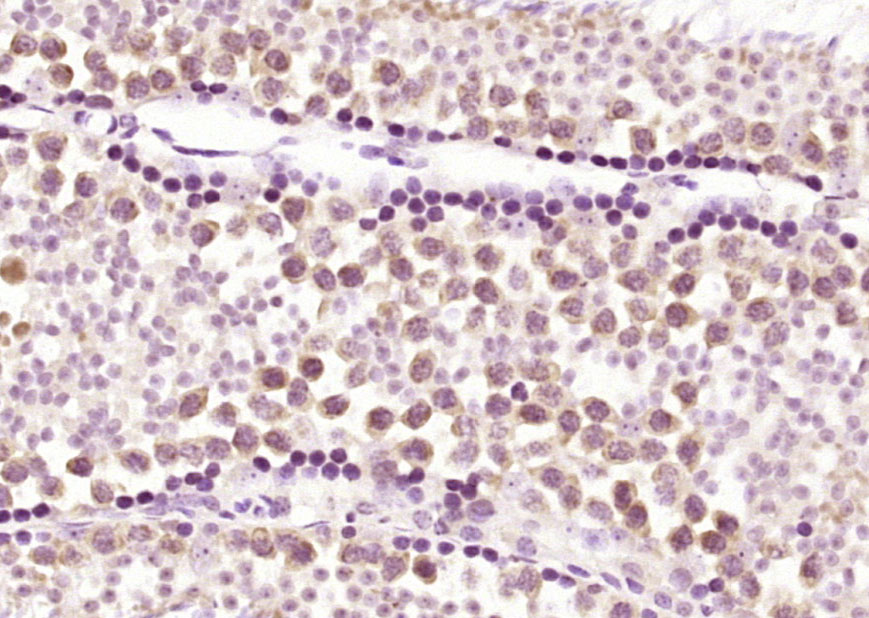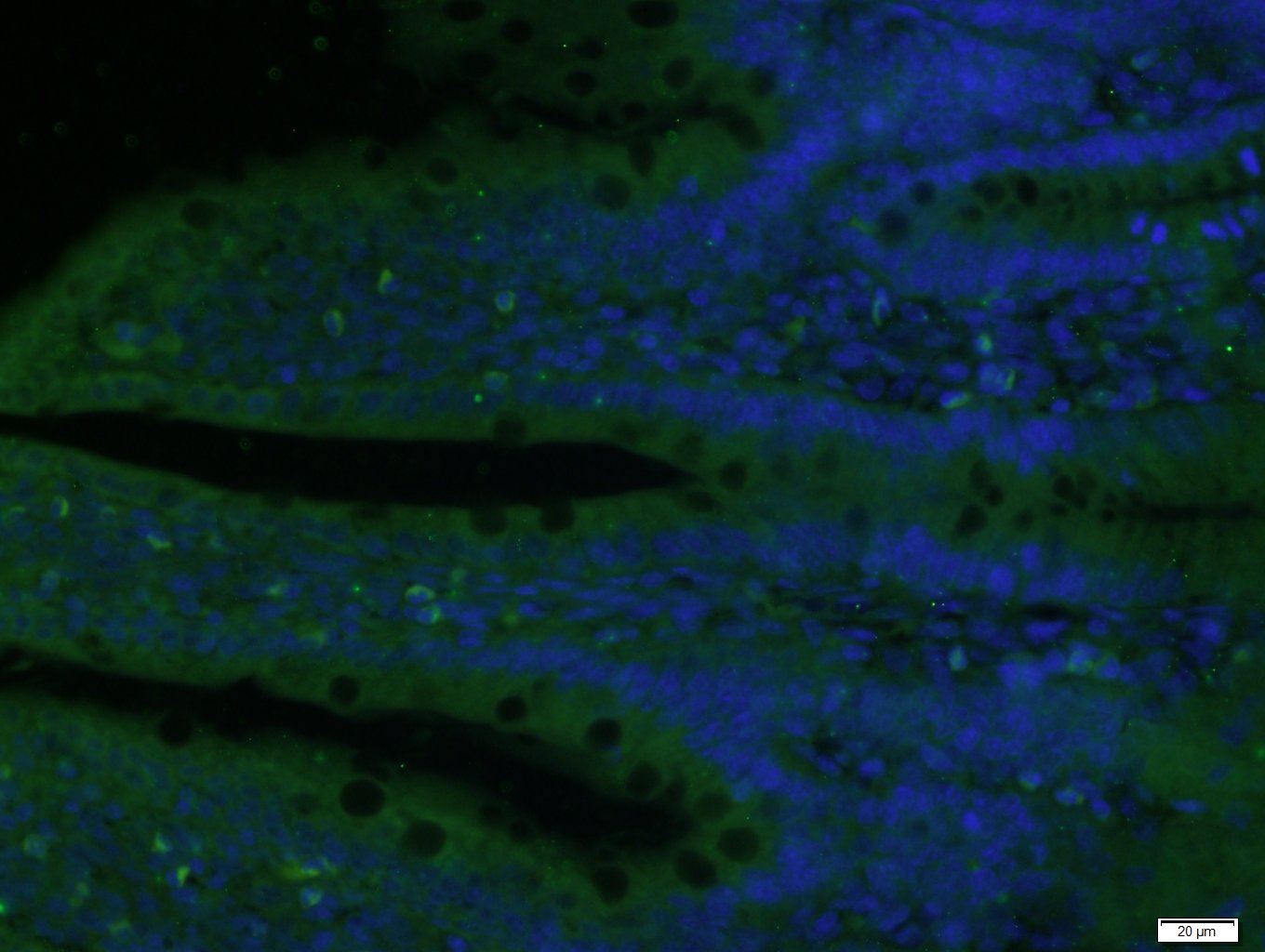
Rabbit Anti-TET3 antibody
hCG_40738; KIAA0401; Methylcytosine dioxygenase TET3; Probable methylcytosine dioxygenase TET3; Tet methylcytosine dioxygenase 3; Tet oncogene family member 3; Tet3; TET3_HUMAN.
View History [Clear]
Details
Product Name TET3 Chinese Name 甲基胞嘧啶双加氧酶TET3抗体 Alias hCG_40738; KIAA0401; Methylcytosine dioxygenase TET3; Probable methylcytosine dioxygenase TET3; Tet methylcytosine dioxygenase 3; Tet oncogene family member 3; Tet3; TET3_HUMAN. literatures Research Area Tumour Cell biology transcriptional regulatory factor Epigenetics Immunogen Species Rabbit Clonality Polyclonal React Species Mouse, Rat, (predicted: Human, Chicken, Dog, Pig, Cow, Sheep, ) Applications WB=1:500-2000 ELISA=1:5000-10000 IHC-P=1:100-500 IHC-F=1:100-500 ICC=1:100-500 IF=1:200-800 (Paraffin sections need antigen repair)
not yet tested in other applications.
optimal dilutions/concentrations should be determined by the end user.Theoretical molecular weight 179kDa Cellular localization The nucleus cytoplasmic Form Liquid Concentration 1mg/ml immunogen KLH conjugated synthetic peptide derived from human TET3: 1561-1660/1660 Lsotype IgG Purification affinity purified by Protein A Buffer Solution 0.01M TBS(pH7.4) with 1% BSA, 0.03% Proclin300 and 50% Glycerol. Storage Shipped at 4℃. Store at -20 °C for one year. Avoid repeated freeze/thaw cycles. Attention This product as supplied is intended for research use only, not for use in human, therapeutic or diagnostic applications. PubMed PubMed Product Detail Members of the ten-eleven translocation (TET) gene family, including TET3, play a role in the DNA methylation process (Langemeijer et al., 2009 [PubMed 19923888]).[supplied by OMIM, Nov 2010]
Function:
Dioxygenase that catalyzes the conversion of the modified genomic base 5-methylcytosine (5mC) into 5-hydroxymethylcytosine (5hmC) and plays a key role in epigenetic chromatin reprogramming in the zygote following fertilization. Also mediates subsequent conversion of 5hmC into 5-formylcytosine (5fC), and conversion of 5fC to 5-carboxylcytosine (5caC). Conversion of 5mC into 5hmC, 5fC and 5caC probably constitutes the first step in cytosine demethylation. In zygotes, DNA demethylation occurs selectively in the paternal pronucleus before the first cell division, while the adjacent maternal pronucleus and certain paternally-imprinted loci are protected from this process. Participates in DNA demethylation in the paternal pronucleus by mediating conversion of 5mC into 5hmC, 5fC and 5caC. Does not mediate DNA demethylation of maternal pronucleus because of the presence of DPPA3/PGC7 on maternal chromatin that prevents TET3-binding to chromatin (By similarity). In addition to its role in DNA demethylation, also involved in the recruitment of the O-GlcNAc transferase OGT to CpG-rich transcription start sites of active genes, thereby promoting histone H2B GlcNAcylation by OGT.
Subunit:
Interacts with HCFC1 and OGT.
Subcellular Location:
Nucleus. Cytoplasm. Note=At the zygotic stage, localizes in the male pronucleus, while it localizes to the cytoplasm at other preimplantation stages.
Tissue Specificity:
Expressed in colon, muscle, adrenal gland and peripheral blood lymphocytes.
Similarity:
Belongs to the TET family.
SWISS:
O43151
Gene ID:
200424
Database links:Entrez Gene: 200424 Human
Entrez Gene: 194388 Mouse
Omim: 613555 Human
SwissProt: O43151 Human
SwissProt: Q8BG87 Mouse
Unigene: 516107 Human
Unigene: 211030 Mouse
Unigene: 485069 Mouse
Product Picture
Bought notes(bought amounts latest0)
No one bought this product
User Comment(Total0User Comment Num)
- No comment




 +86 571 56623320
+86 571 56623320
 +86 18668110335
+86 18668110335

